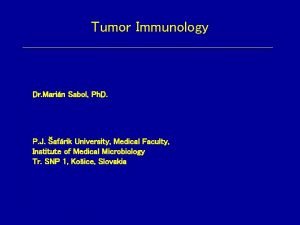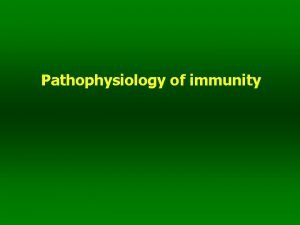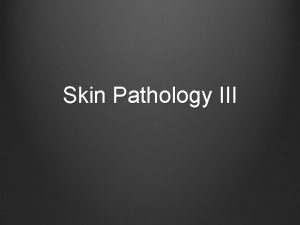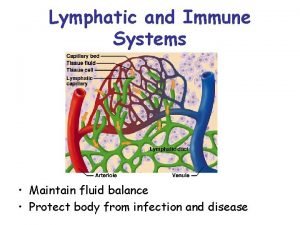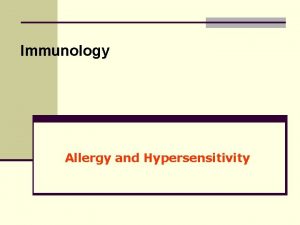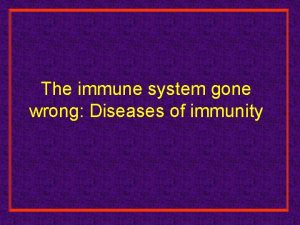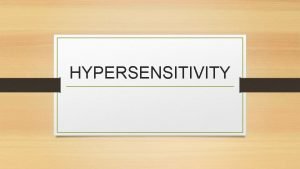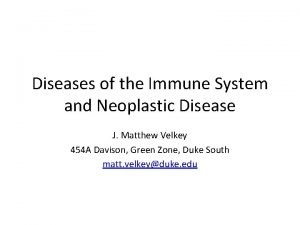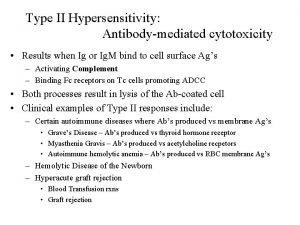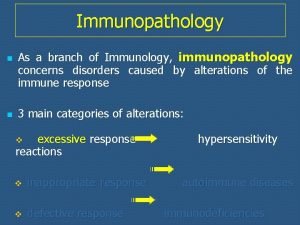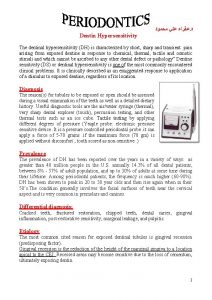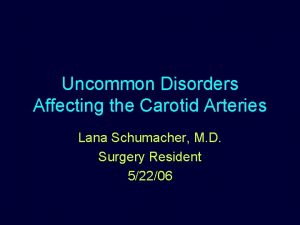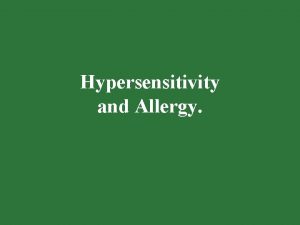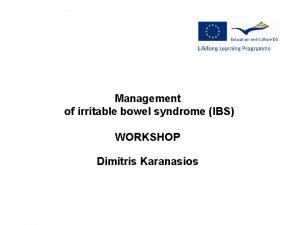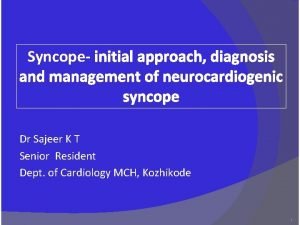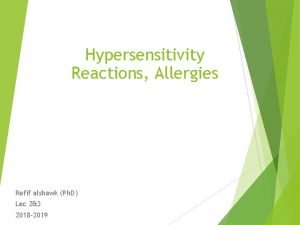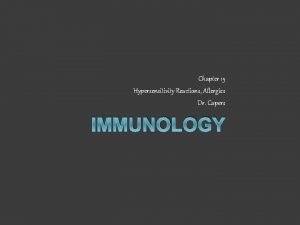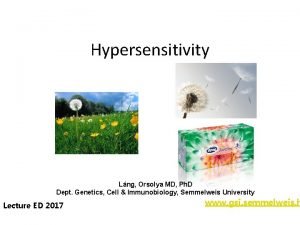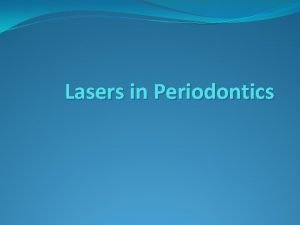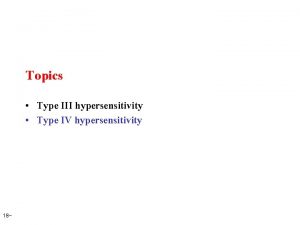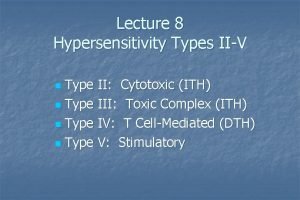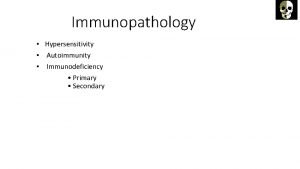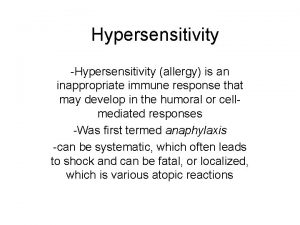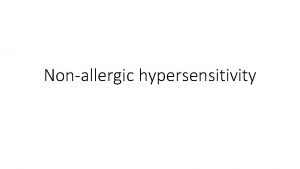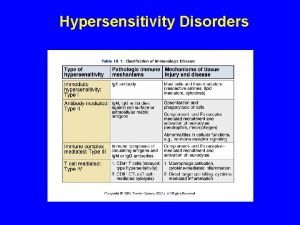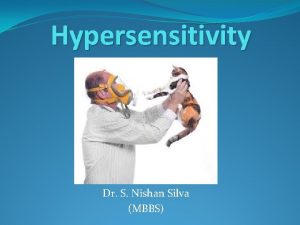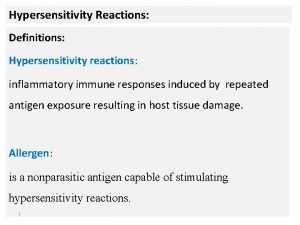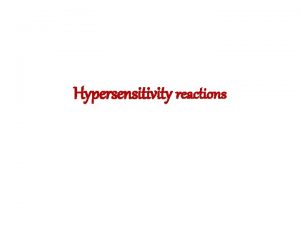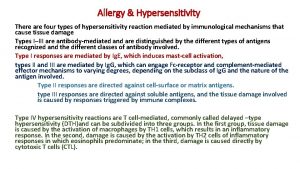Cytotoxic Hypersensitivity Type II Type II Cytotoxic hypersensitivity



















- Slides: 19

Cytotoxic Hypersensitivity (Type II)

Type II Cytotoxic hypersensitivity Reaction time is minutes to hours n mediated by antibodies of Ig. M or Ig. G class and complement n Phagocytes and NK cells may also play a role (ADCC). n Diagnostic tests include detection of circulating antibody against tissues involved and the presence of antibody and complement in the lesion (biopsy) by immunofluorescence n n Directed against cell surface or tissue antigen The reaction may be local

Some diseases caused by Type II n n n Transfusion reactions Autoimmune Hemolytic anemia Hemolytic disease of newborn Drug induced hemolytic anemia Autoimmune thrombocytopenia Pemphigus vulgaris(desmoglein ) Goodpastures syndrome Myasthenia gravis Graves disease Insulin resistant diabetes Pernicious anemia others

Drug-Induced Reactions: Adherence to Blood Components blood cell adsorbed drug or antigen drug metabolite antibody to drug complement lysis

Drugs that can cause this type of hemolytic anemia include: n n n Cephalosporins (a class of antibiotics) Levodopa Methyldopa Penicillin and its derivatives Quinidine Some nonsteroidal anti-inflammatory drugs (NSAIDs)

Hemolytic Disease of the Newborn first birth post partum subsequent Rh. D negative mother Rh. D positive red cells Rh. D positive fetus B cell anti-Rh. D Lysis Of RBC’s Rh. D positive fetus


Type III (Immune complex mediated Diseases) The reaction may be general (e. g. , serum sickness) or may involve individual organs including skin ( Arthus reaction), kidneys, lungs, blood vessels , joints or other organs. n It is mediated by soluble immune complexes n The reaction may take few hours after exposure to the antigen n The lesion contains primarily neutrophils n



Tissue injury mechanisms n Antibodies may opsonize cells or activate the complement system Production of complement proteins that opsonize cells. These cells are phagocytosed and destroyed by phagocytes that express Fc. R and CR Main mechanism in autoimmune hemolytic anemia and thrombocytopenia and hemolysis in transfusion reactions.


Mechanisms of tissue injury



Some diseases caused by immune complexes Systemic Lupus Erythematosus n Nephritis n Vasculitis n Post streptococcal glomerulonephritis n

Mechanisms of tissue injury

Mechanisms of tissue injury

Pemphigus vulgaris
 Cytotoxic lymphocyte
Cytotoxic lymphocyte Dermatomyositis hypersensitivity type
Dermatomyositis hypersensitivity type Pemphigus foliaceus histology
Pemphigus foliaceus histology Type 2 hypersensitivity
Type 2 hypersensitivity Serum sickness hypersensitivity type
Serum sickness hypersensitivity type Delayed type hypersensitivity reactions
Delayed type hypersensitivity reactions Schultz dale phenomenon is which type of hypersensitivity
Schultz dale phenomenon is which type of hypersensitivity Delayed type hypersensitivity reactions
Delayed type hypersensitivity reactions Type 3 hypersensitivity
Type 3 hypersensitivity Hypersensitivity types examples
Hypersensitivity types examples Dental hypersensitivity
Dental hypersensitivity Carotid sinus hypersensitivity
Carotid sinus hypersensitivity Hypersensitivity
Hypersensitivity Visceral hypersensitivity
Visceral hypersensitivity Carotid sinus hypersensitivity
Carotid sinus hypersensitivity Hypersensitivity reactions
Hypersensitivity reactions Sensitization hypersensitivity
Sensitization hypersensitivity Latex allergy
Latex allergy Enduring pattern meaning
Enduring pattern meaning Dental hypersensitivity
Dental hypersensitivity
